Hinduism
1/46
There's no tags or description
Looks like no tags are added yet.
Name | Mastery | Learn | Test | Matching | Spaced |
|---|
No study sessions yet.
47 Terms
Ahimsa
Non-injury to living things; the doctrine of non-violence.
Brahman
The supreme power in the Universe; ultimate reality; God.
Diwali
Hindu festival of Lights (sometimes Divali or Deepavali); this celebrates good conquering evil and invites the goddess Lakshmi into the home.
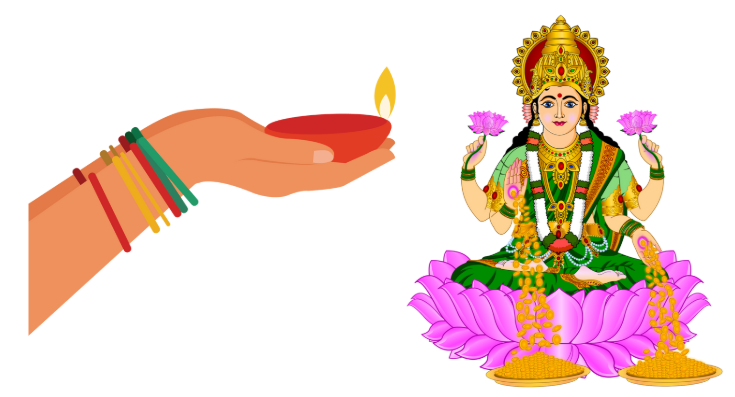
Dharma
The religious and moral duty in relation to a person’s status in Hindu society, determined by caste.
Moksha
The release from the cycle of birth, death and rebirth; liberation; ultimate union with God.
Murti
An image or statue of a God/Goddess; one or more of these are often the focal point of puja.
Puja
Prayer/worship of the gods; offerings. Offerings are given to the murti.
Trimurti
The three major aspects of the Brahman, the supreme power; Brahma the Creator, Vishnu the Preserver and Shiva the Destroyer
Brahman – the Ultimate, God and gods
Brahman is the Ultimate Reality.
It is another name for God.
There are over 300 million gods in Hinduism.
The Blind Men and the Elephant’ parable shows that just as each blind man feels only one part of the elephant and describes that part, the devotee only sees one aspect of Brahman and sees God as that god (Ramakrishna)
We cannot know and understand all of Brahman
All the different gods of Hinduism are just different expressions of Brahman.
It would not be right to describe Hinduism as polytheistic, as having many different gods.
Brahman - Source of everything
Brahman is the source of everything.
It is the foundation of all existence. Everything comes from it.
It can be found in everything and in all living beings as the atman (self).
Nirguna Brahman means that Brahman has no qualities nor personality.
The Hindu philosopher Shankara (788-820 CE) believed that Brahman is impersonal.
It is not male nor female, we cannot know what Brahman is like.
Saguna Brahman is a personal being that has qualities and characteristics.
A Hindu philosopher called Ramanuja (1017–1137 CE) believed Brahman was personal.
Saguna Brahman is the creator, sustainer and controller of the universe.
Three features of the divine
God (the divine) has three features:
1. Brahman – the Ultimate Reality
2. Antaryami – the divine within the heart
3. Bhagavan – the loving personal God
Deities (personal gods and goddesses):
* Deities are gods
* All Hindu families have a family god.
* Sometimes the women of the family will worship a goddess (female god).
* All Hindu Temples or Mandirs are dedicated to one god whilst having smaller shrines to others.
* Murtis are images that represent the gods, they have many symbolic meanings, the images become infused with the spirit of the god during worship but they are not actually the god
Trimurti
Trimurti means three images (of God)
Three gods take on three different roles in relation to the existence of reality.
Brahma is the creator.
There are not many worshippers dedicated to Brahma today, perhaps because his job is over.
Vishnu is the preserver and sustainer.
Followers of Vishnu are Vaishnavites and they are the largest group of Hindus.
Vishnu’s name means "All-Pervading"
He is the protector of the world and the restorer of moral order (dharma).
He is peaceful, merciful, and compassionate.
He has ten avatars (incarnations), including Rama and Krishna.
Avatars (avatara) are descents to earth (incarnations), God takes on different forms to help humans at times of trouble
His consort (wife) is Lakshmi.
Shiva
Shiva is the destroyer.
The world is created, it is kept in existence and is brought to an end. It is then recreated and the cycle starts again.
Devotees of Shiva are called Shiavites. They are the second largest group of Hindus.
His name means "Auspicious One"
Shiva is a paradoxical deity (opposites):
He is both the destroyer and the creator,
He is the great ascetic (strict holy man, sadhu) and on the other hand the symbol of sex and fertility
He is the kind and loving Lord and on the other hand the angry one who punishes the wicked.
His consorts (wives) are Durga, Kali and Parvati.
Krishna
Krishna is the most popular avatar of Vishnu
He was the cowherd
He is the god who plays the flute and entices the gopis (milkmaids) out to dance with him in the moonlight, and he plays tricks on them
He married one of the gopis called Radha
Tradition says he performed miracles and slew demons like the wicked Kamsa
He was Arjuna’s charioteer and convinced him of his moral duty to fight in a battle and defend his people
Shakti (1)
Shakti is the energy of god, it is the goddess, all goddesses are called Shakti
Many male gods have female counterparts, consorts or wives.
God or Brahman has a feminine side as well as a masculine one.
Parvati is a consort of Shiva and she is an example of perfect motherhood
Parvati and Shiva are the parents of Ganesha the elephant-headed god
Shakti (2)
Shakti is the energy of god, it is the goddess, all goddesses are called Shakti
Kali has a necklace of skulls and a hanging tongue and carries a sword, a head, a bowl and a trident
Durga is a fierce and powerful goddess with many arms to fight demons
Durga rides a lion or tiger and carries weapons: a bow and arrow, discus, trident and sword
Durga fights and defeats the wicked demon Mahish
Dharma
* Dharma means duty and all Hindus have dharmas or duties.
* It means cosmic law which keeps order in the universe
* Sanatana Dharma means the religion (Hinduism)
* Varna – which social group (caste) you are in
* Doing your duty (dharma) earns you good karma, not following your duty generates bad karma
* Varnashramadharma- doing the dharma or duty connected with your stage of life and social class
4 Ashramas - Stages of life
There are four ashramas or stages of life, each have dharmas (duties):
1. Student (Brahmacari) duty to do well at school and college or university
2. Householder (Grihasta) responsibility to bring up the family
3. Retirement (Vanaprastha) handing over of responsibilities to first son, gives up daily work
4. Renouncer (Sannyasin) only a few reach this stage and give up all worldly ties, live a religious life, a very few become wanderers
4 Varnas – Social classes or groups
There are 4 varnas or social classes, each have dharmas (duties):
1. Brahmins – traditionally the priests; duty to preserve the traditions of Hinduism, set a good moral example; today they are priests and professionals
2. Kshatriyas – traditionally the warriors and rulers; responsibility to lead, rule and protect the people; today they are administrators not just rulers and soldiers
3. Vaishyas – traditionally the merchants, business people; responsibility to provide goods and wealth of society; entrepreneurs, businesses, shopkeepers
4. Shudras – traditionally the service class; responsibility to do physical and manual work that supports everyone
Outcastes – those that do not have a varna
4 Aims of Life
There are four aims in life for all Hindus found in the book ‘The Laws of Manu’.
1. Dharma which means practising right conduct in your religious and social life;
2. Artha which means earning material wealth by honest means;
3. Kama (not karma) which is enjoying the pleasures and beauty of life;
4. Moksha which is aiming for the final goal of release from the cycle of reincarnation.
Samsara, atman, karma (reincarnation) and moksha (1)
* Samsara is the idea that time is cyclical, it has no beginning and no end.
* Birth, death and rebirth occurs over and over again. The cycle is endless.
* All individuals have a self or soul which is called the atman.
* At death the atman passes on from one body to the next, this is called transmigration.
* The body is only a temporary house for the atman.
* Karma refers to our actions and the consequences of our actions.
Samsara, atman, karma (reincarnation) and moksha (2)
* Good karma will lead to a good reincarnation. Bad karma will lead to a bad reincarnation.
* A better reincarnation means to move up a varna.
* Eventually the aim is to escape the reincarnation cycle and attain moksha.
* Moksha is liberation from the samsara. This is achieved by those who have lived a good spiritual life. Those who are not selfish and who renounce the fruits of their actions (those who do not look for a reward).
* The atman becomes one with Brahman or joins a God in communion.
The universe and cosmology
* Cosmology is concerned with the universe and time
* The world is cyclically created and destroyed over billions of years.
* Time is divided into 4 epochs or ages called Yugas.
* We are now living in the final age, the age of darkness called Kali yuga.
* In the end, the world will be destroyed by Shiva. It will be recreated again by Brahma.
* Some observers have noted that this idea is like the scientific idea of the Big Bang and the Big Crunch.
* Hindu literature (in the Puranas) teaches there are numerable universes, heavens and hells.
* Vaikuntha is the spiritual realm, the abode of Lord Vishnu.

Spirit and matter – the triguna
* Reality is made up of the spiritual and physical or material.
* Purusha (the spirit) equates with the atman (the self).
* Prakriti refers to our physical nature (matter) (the body).
* The spirit (purusha) is trapped in matter (prakriti)
* Prakriti has three qualities or gunas or the triguna.
* Sattva – light/goodness, Rajas – energy/passion, Tamas – darkness/ignorance
* By the kali yuga (final age), tamas (which is the negative and impure) dominates in most human beings.
* This explains why the world faces many more problems, e.g. a rise in crime, conflict and war and environmental problems.
Why Hindus worship?
* To show loving devotion, bhakti to a god like Shiva or Vishnu
* Hindus believe that worship can generate good karma and blessings from God
* For some Hindus, the aim is for the atman (soul) to find its way back to and merge with Brahman.
* For other Hindus, they see the aim as the atman reaching communion with God.
Where Hindus worship? - Shrines
* Most homes have a space set aside for a shrine.
* The family’s chosen deity (god) will feature on a home shrine.
* Puja (worship) is performed daily at a home shrine.
* In India, shrines are also found outdoors, along roadsides, worshippers can stop and pay respects to God on their journey.
Where Hindus worship? - Mandirs (Temples)
* In India, elaborate temples have carvings of murtis, images of the gods on each side to drive away evil forces.
* A mandir is the house of God where the deity is honoured like a King or Queen.
* The deity is honoured by placing gifts of light (butter lamps) and food (grains and rice) on the shrine.
* Shoes (often made of leather) are always removed before entering a shrine to keep it pure.
* There is usually a main god at each temple but other gods will be honoured there too.
* Many temples in Britain are buildings which have been converted into mandirs, they are simple on the outside but will have a shrine room inside
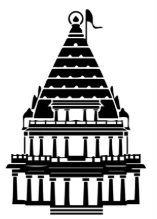
How Hindus worship? (1)
* Puja is giving respect and honour to a god.
* Prayers are offered to God in front of the
murti (image).
* Offerings are made of incense, flowers, fruit,
water and rice.
* An arati lamp (holder with 5 lamps) is lit and waved around the murti.
* Arati is performed with prayers and religious songs (hymns) are sung called bhajans.
* Worshippers then pass their hands over the flames of the flame of the arati lamp as it is passed around and then they pass their hands over their heads to receive God’s blessing.
* The devotee approaches the deity kissing the step of the shrine (to show respect) chanting mantras (words and phrases) or singing bhajans (devotional songs).
How Hindus worship? (2)
* It is believed the spirit of God infuses the image and so the devotee views God through the murti
* The appearance of the God is called darshan.
* The fire sacrifice (Havan) is made to the god Agni by a Brahmin (priest) in a Mandir, prayers are said and butter, oil, grains and rice are offered into the fire.
* The purpose of havan is to receive God’s blessings.
* Mantras – words and phrases from the scriptures which are chanted during puja
* Chanting the mantra om (Ultimate Reality) during meditation helps the Hindu to feel oneness with Brahman
Vaishnav Bhakti
* bhakti is loving devotion to and worship of God
* devotion to Vishnu or his avatars (Krishna and Rama)
* This involves chanting Vishnu’s name in front of murtis
* Performing puja to Vishnu and singing devotional songs or bhajans praising Krishna
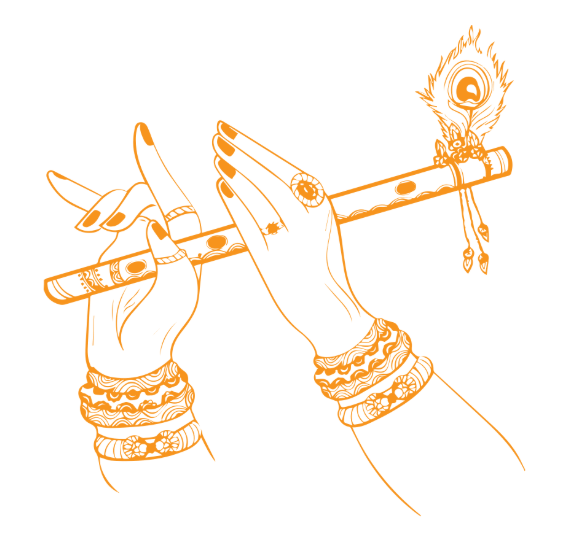
Shaiva bhakti
* devotion to Shiva
* devotion is offered to a murti or the lingam (a stone pillar) representing Shiva
* It represents power of regeneration and creation
* The pillars are washed and mantras are chanted
* offerings are made to gain Shiva’s blessings
* many Shaivas focus on deep meditation, as Shiva was the ascetic who meditated in the Himalayas
Honouring gurus
* a guru is a wise teacher of religion and spirituality
* a guru will guide a devotee as they try to reach moksha
* many gurus are held to have attained moksha themselves or to be close to it
* a guru has given up all attachment to worldly goods and spends the time studying scriptures and meditating, doing yoga
* gurus pass on knowledge to disciples when they think they are ready for it
* Today not all gurus are men and some women have become gurus
Purpose of Hindu festivals
* A festival celebrates a key event in the life of a god.
* It brings families and communities together.
* It celebrates the season, e.g. spring (at Holi)
Diwali (1)
* It is celebrated in October or November and lasts for 5 days.
* It is the festival of lights.
* It is celebrated with firecrackers and bonfires to represent the victory of good over evil, of light over darkness, truth over falsity.
* Worshippers of Vishnu remember the story Rama returning to his Kingdom with Sita in victory after saving her from the clutches of the ten-headed demon Ravana; he was helped by Hanuman the monkey god.
Diwali (2)
* Business people get their financial accounts in order and pray for the blessing of Lakshmi as it is the new financial year.
* Householders place diva lamps in their windows and doorways to receive the blessing of Lakshmi.
* Lakshmi is the consort (wife) of the god Vishnu.
* She is one of the most popular goddesses of Hindu faith and is known as the goddess of wealth and purity.
Holi
* It is celebrated In February/March, a Spring festival.
* Communities have water fights and throw coloured powders over each other.
* This remembers the tricks Krishna played on the gopis (milkmaids).
* Normal standards of behaviour are forgotten and everyone joins in the fun, it is believed that even God has fun.
* Distinctions of caste, class, age, and gender are suspended during Holi; everybody can join in the fun
* The story of Prahlad and Holika remembers that good overcomes evil.
* Vishnu protects Prahlad from the bonfire that the demoness and wicked aunt Holika leads him into, instead she is reduced to ashes

Raksha Bandhan
* This is celebrated in August
* It celebrates brotherhood and love.
* Traditionally, sisters tie a rakhi, a red and gold bracelet around their brother’s wrist to celebrate the brother-sister relationship.
* The act honours the brother for doing his religious duty (dharma) and protecting her.
* If the rakhi has been consecrated, it removes sin and offers protection (for a year).
* The practice has developed today, with close friends, members of the community following the custom too.
* In mythology, Lakshmi tied a rakhi to the demon King Bali to free Vishnu from an agreement to stay in his palace as a return gift
Pilgrimages (1)
A visit to a sacred river, holy city or mountain connected with a god
Reasons to go on a pilgrimage:
* To feel closer to God
* To show commitment and strengthen faith
* To say thank you to God for something
* To make amends for some wrong doing
Pilgrimages (2)
Where do Hindus go on pilgrimage?
* Many sites are associated with gods: the river Ganges with the goddess Ganga; the Himalayan mountains with the god Shiva.
* Varanasi is an important town on the Ganges for Shiva devotees, worshippers of Rama and followers of the goddess Durga.
* Varanasi is like the Hindu ‘Mecca’
* Vrindavan is a town visited by Krishna devotees.
Pilgrimages (3)
What do pilgrims do on the pilgrimage at Varanasi and the Ganges?
* This pilgrimage is popular with Shaivas (worshippers of Shiva) and wanting to worship the goddess Ganga
* Pilgrims wash in the waters of rivers to receive God’s blessings
* They collect water to take home for a relative who is ill.
* Devotees wear simple clothes and men may shave their heads and they remain celibate (do not have sex) to show commitment to God.
Pilgrimages (4)
* Pilgrims circumambulate (walk around clockwise) a shrine or temple to show respect to God.
* They take ashes of a loved one to scatter in the Ganges, the water washes away bad karma and can help a good reincarnation.
* Some Hindus go to die on the ghats (steps of the Ganges) in the hope of achieving moksha.
Varanasi and Shiva – Shaiva pilgrimage
* Varanasi is the holiest city for Shaivites, worshippers of Shaiva pilgrimage
* It is said the Shiva founded the city of Varanasi by the River Ganges.
* Most of the temples are dedicated to Shiva.
* The Great Night of Shiva (March) commemorates when Shiva saved the world from destruction.
* Pilgrims bathe in the Ganges before dawn and then take water to the temple to offer to Shiva at a puja.
* They fast for 24 hours and then they believe their prayers will be answered.
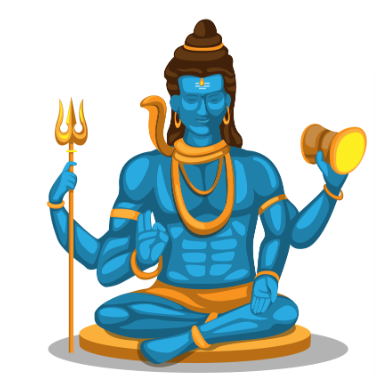
Vrindavan and Krishna – Vaishnav pilgrimage (1)
* The town Vrindavan is on the River Yamuna
* Vrindavan is popular with Vaishnava pilgrims (worshippers of Vishnu and his avatar Krishna) and it has over 1000 temples.
* It is the birthplace of Krishna
* To show devotion, they walk around clockwise on a 12 kilometre route which recall events of Krishna’s youth
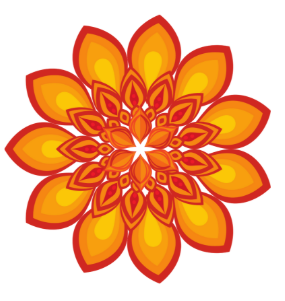
Vrindavan and Krishna – Vaishnav pilgrimage (2)
* On arrival pilgrims roll in sand by the River Yamuna as this is where Krishna played as a child
* The pilgrims make yellow clay markings (two vertical lines) on their forehead to get Krishna’s protection
* At one mandir which remembers Krishna as a child, no bells are rung during arati, as Krishna liked a lie-in, so they do not want to wake him up.
* Once a year (August) the murti of Krishna is put on a swing, for darshan and a curtain is drawn between it and devotees as the god’s penetrating eyes can make people unconscious.
Vrindavan Tree Project
* Many Hindus believe that the god Krishna lived in the Vrindavan forest, in Northern India.
* By 1980s India’s industrial development was having a devastating effect on the forest.
* The project is a scheme to protect the forest.
* It started after a local retired engineer witnessed the last tree (a home to peacocks) in his quarter of the town being cut down.
* God or Brahman is found in all of nature, to destroy it is to disrespect God.

Cow protection
* Krishna was a cowherd so many want to follow his example.
* Cows gives us enough nutrition for a complete meat-free diet.
* The Vedas forbids the killing of cows, the animal is sacred.
* Nandi the bull is a god and is Shiva’s vehicle.
* A goshalla is a shelter for cows and oxen on a farm. Cows produce milk and the oxen work, e.g. ploughing. These animals are not slaughtered for meat.
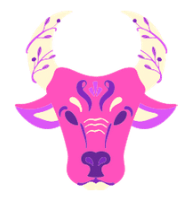
Food For Life
* The Hare Krishna Movement’s Food for Life project is the world's largest vegetarian non-profit food relief organization.
* Volunteers provide up to 2,000,000 free meals daily.
* It reaches out to all in need, including; the homeless, disadvantaged children throughout India; and victims of natural disasters around the world.
* The Food for Life project is a modern-day revival of the ancient Hindu culture of hospitality with its belief in the equality of all beings.
